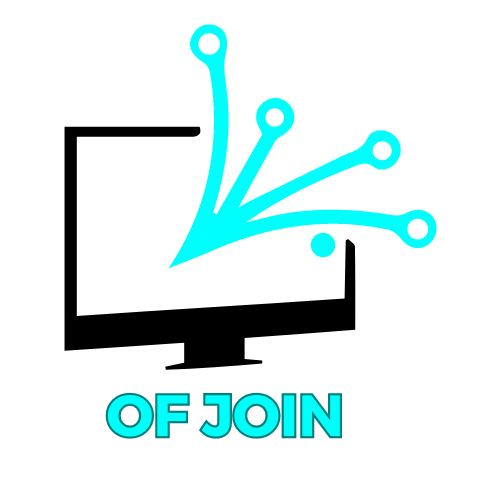Inside the Metaverse 2.0: Beyond Gaming and Into Real-World Impact
When the term metaverse first hit headlines a few years ago, it was often associated with futuristic gaming worlds, virtual avatars, and expensive headsets. But as the technology has matured, the metaverse has evolved far beyond its gaming roots. Today, “Metaverse 2.0” represents a new digital frontier—one that’s reshaping how we work, learn, shop, and connect in real life.
In 2025, the metaverse is no longer a buzzword—it’s a functional layer of the modern internet. It’s where virtual experiences meet real-world value, and where businesses, educators, and everyday users are discovering entirely new ways to interact.
Here’s what Metaverse 2.0 really means, and why it’s about much more than play.
1. From Virtual Worlds to Real Economies
The first wave of the metaverse—let’s call it Metaverse 1.0—was driven largely by entertainment and gaming. Platforms like Roblox, Fortnite, and Decentraland gave users immersive environments to play, build, and socialize. But Metaverse 2.0 has shifted its focus from escapism to empowerment.
Today’s metaverse integrates directly with real-world commerce. Virtual marketplaces now allow users to buy physical goods in 3D environments, attend digital product launches, or tour a home for sale halfway across the world. Major retailers are creating “digital twins” of their stores, allowing customers to try on clothing using avatars or test products in virtual showrooms before purchasing in real life.
Even real estate and architecture industries are getting involved. Developers use immersive metaverse spaces to model designs, collaborate remotely, and attract investors—all before laying a single brick. The metaverse is no longer just a digital playground—it’s a functioning, profitable economy.
2. The New Workplace: Collaboration Without Borders
One of the most transformative aspects of Metaverse 2.0 is its impact on how we work. As remote and hybrid work models continue to dominate, businesses are turning to immersive platforms to build stronger, more connected teams.
Imagine walking into a virtual office that mirrors your company’s headquarters—complete with meeting rooms, whiteboards, and watercooler areas. You can collaborate with colleagues from across the world, present projects in 3D, or conduct training sessions using lifelike simulations.
Companies like Microsoft, Meta, and NVIDIA are leading the charge by integrating metaverse functionality into business software. Virtual meeting spaces powered by spatial computing and AI are making remote collaboration more human, interactive, and productive.
The result? Fewer Zoom calls, more creativity, and a digital workspace that feels surprisingly real.
3. Education, Training, and Skill Building in 3D
The metaverse isn’t just revolutionizing business—it’s reshaping education. Universities, trade schools, and corporations are using immersive environments to make learning more engaging and practical.
Medical students can now practice surgeries in virtual hospitals. Engineering trainees can test complex systems without wasting materials. History students can “walk” through ancient civilizations, exploring events and artifacts firsthand.
Even corporate training has entered the metaverse. Instead of passive video modules, employees engage in interactive simulations that teach leadership, safety, and technical skills through experience. This shift toward experiential learning is proving more effective, memorable, and inclusive than traditional methods.
4. The Social Shift: Rebuilding Human Connection
One of the biggest criticisms of the digital age is that technology has made people feel more isolated. Ironically, Metaverse 2.0 may be the key to reversing that.
Unlike traditional social media—which relies on flat screens and passive scrolling—the metaverse offers depth, presence, and participation. People can attend virtual concerts, join support groups, or celebrate milestones together in 3D spaces that feel emotionally authentic.
For example, families separated by distance can gather around a virtual dinner table. Fans can interact with their favorite artists during live digital performances. Community organizations are using metaverse spaces to host fundraisers and awareness events that feel immersive rather than transactional.
By blending digital interaction with a sense of presence, the metaverse is redefining what it means to connect online.
5. Challenges and the Road Ahead
Of course, no digital revolution comes without challenges. Privacy, accessibility, and data security remain top concerns. Building a truly inclusive metaverse means ensuring access to affordable devices and broadband connectivity for all users—not just those with the latest VR gear.
There’s also the question of regulation. As digital spaces gain economic and social power, governments and corporations must define rules around ownership, taxation, and content moderation. The future success of Metaverse 2.0 will depend on transparency, ethical development, and responsible innovation.
6. Looking Forward: The Merging of Digital and Physical Worlds
Metaverse 2.0 marks the beginning of a convergence—where the digital and physical worlds blend seamlessly. Augmented reality glasses, AI-driven avatars, and blockchain-backed digital ownership are making it possible to move fluidly between both realms.
Soon, virtual experiences will not replace real ones—they’ll enhance them. You might attend a live concert in your city while fans from around the world join virtually. You might learn a new skill in a 3D classroom and apply it instantly in real life.
The metaverse has grown up. What began as a niche gaming concept has become a transformative force shaping economies, education, and culture. Metaverse 2.0 is not about escaping reality—it’s about expanding it.
As technology continues to advance, the boundaries between online and offline life will blur even further. And in that space between pixels and people lies the true power of the metaverse: connection, collaboration, and creativity on a global scale.







